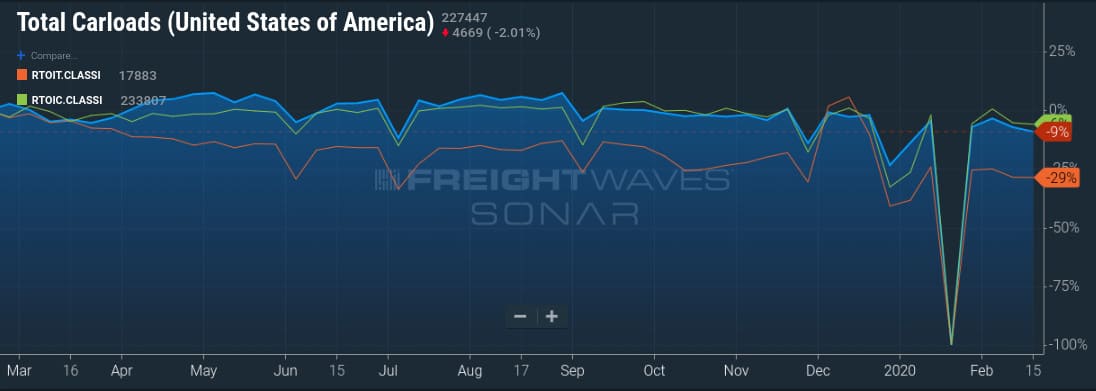U.S. rail traffic year-to-date continues to trend downward compared with the same period a year ago, according to the Association of American Railroads (AAR).
U.S. rail volumes totaled 3.38 million carloads and intermodal units for the first seven weeks of the year, a 6.2.% decline from the same period in 2019. AAR’s data, which includes volumes through the week ending Feb. 15, showed U.S. carloads down 6.1% to nearly 1.63 million carloads, while intermodal units were 6.3% lower, at nearly 1.75 million intermodal containers and trailers.

The decline in U.S. rail volumes comes as the rail industry is watching whether market conditions this year will pull trucking rates higher, which could benefit the railroads’ intermodal offerings. For now, the trucking market expects truck rates to rebound in the second half of this year.
In the meantime, some indicators reflect the possibility of improving macroeconomics. For instance, even though the National Association of Home Builders (NAHB) determined that total housing starts fell 3.6% in January from an upwardly revised December reading to a seasonally adjusted annual rate of 1.57 million units, overall housing construction permits in January reached a 13-year high, while single-family housing starts surpassed the 1 million market for the second consecutive month.
“While the solid pace for residential construction continues, favorable weather conditions may have accelerated production in the winter months,” said Danushka Nanayakkara-Skillington, NAHB’s Assistant Vice President of Forecasting and Analysis. “At the same time, the growth in permits is a harbinger that the market will continue to move forward in the coming months even as builders grapple with supply-side issues like excessive regulations, labor shortages and rising material costs.”







